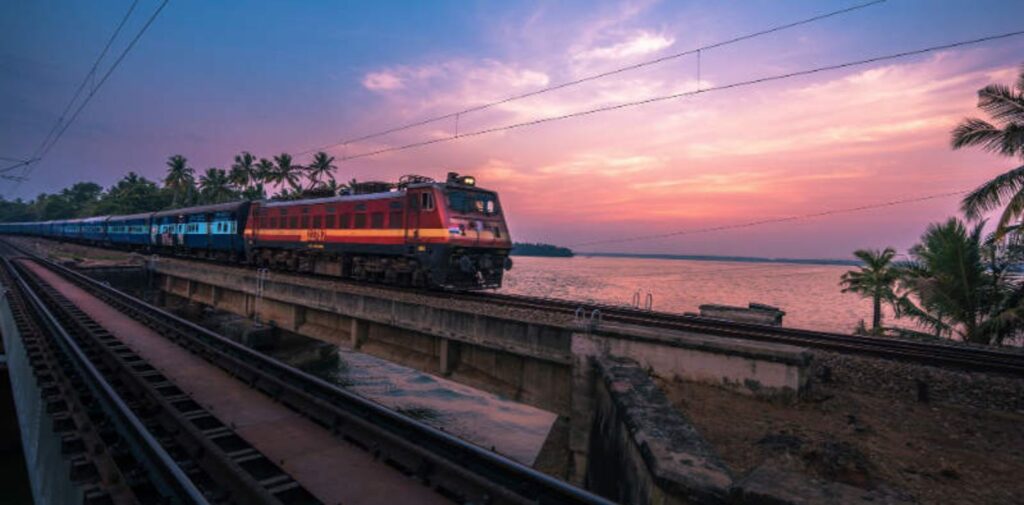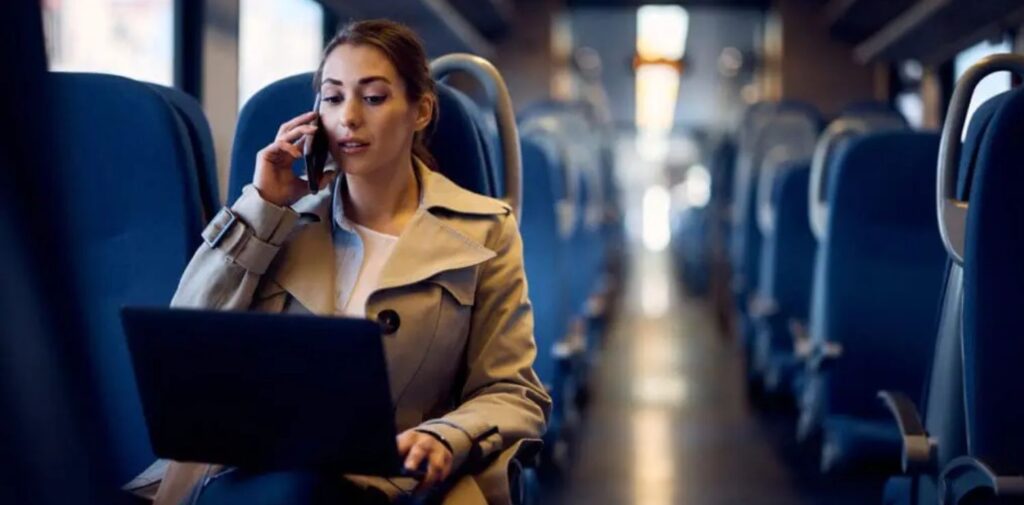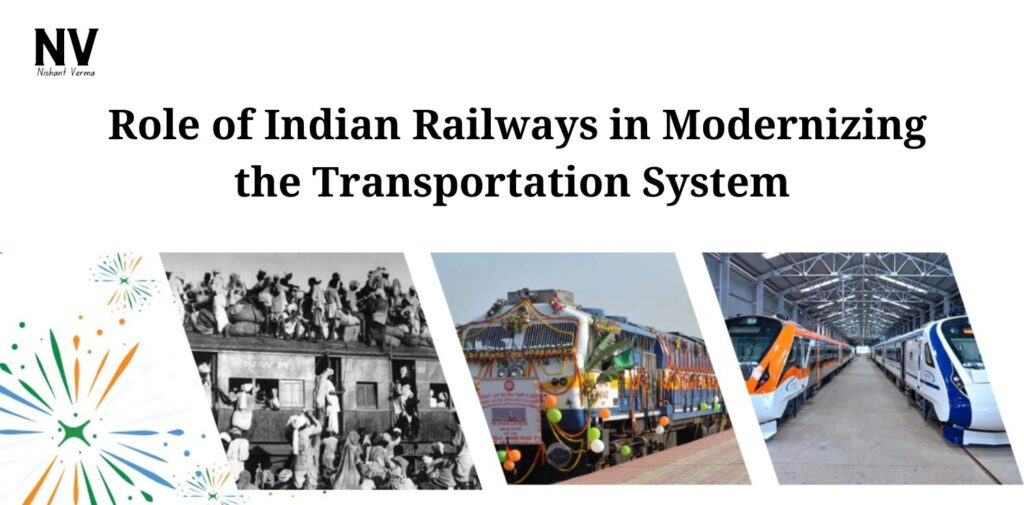Indian Railways, one of the largest and busiest railway networks in the world, has been a vital part of India’s transportation system for over 150 years. It connects millions of people across the country, transporting passengers and goods from one corner to another. Over the years, Indian Railways has not only been an essential mode of travel for millions but has also played a crucial role in modernizing India’s overall transportation infrastructure. As the country continues to grow economically and socially, Indian Railways is adapting to meet the new challenges of the modern world. This article will explore the significant role of Indian Railways in transforming India’s transportation system.
Historical Importance of Indian Railways
Indian Railways was established during British rule in 1853, with the first passenger train running between Mumbai (then Bombay) and Thane. Since then, it has evolved into a vast network that spans over 67,000 kilometers and serves more than 1.3 billion passengers annually. Indian Railways has always been a critical link between the rural and urban parts of the country, facilitating trade, commerce, and travel.
Initially, the primary role of the railways was to connect remote areas with major cities, contributing significantly to the country’s economic growth. In the present day, Indian Railways remains indispensable for the movement of both people and goods, providing low-cost, efficient, and reliable transportation to millions of citizens.

Aiming for Modernization
In recent years, Indian Railways has been undergoing a significant transformation, driven by the need to cater to a rapidly growing population, boost economic growth, and tackle environmental challenges. The modernization of Indian Railways focuses on improving passenger facilities, increasing speed and efficiency, and implementing advanced technologies to enhance safety and reliability. This ambitious modernization plan aims to make the rail network faster, cleaner, and more user-friendly, ultimately contributing to the country’s development.
Upgrading Infrastructure
One of the key areas in the modernization of Indian Railways is upgrading its infrastructure. The government has launched several initiatives to modernize stations, tracks, and trains to improve the overall experience for passengers.
- Modern Railway Stations: Many railway stations across the country are being transformed into world-class facilities with modern amenities such as free Wi-Fi, better waiting areas, clean restrooms, and improved signage. Stations like New Delhi, Mumbai, and Kolkata have already undergone significant renovations, and several others are in the process of modernization.
- Electrification of Tracks: To make the system more energy-efficient and reduce dependence on fossil fuels, Indian Railways has been focusing on electrifying its network. Electrification not only reduces the carbon footprint but also allows trains to run faster and more efficiently. The goal is to achieve 100% electrification of the rail network, which will also help in reducing operational costs.
- High-Speed Rail Projects: One of the most ambitious projects in the modernization efforts is the introduction of high-speed trains. The Mumbai-Ahmedabad bullet train project, which is currently under construction, is set to revolutionize rail travel in India. With a top speed of 320 km/h, these trains will drastically reduce travel time and make railways a more attractive option for long-distance travel.

Advancing Technology and Safety Features
Technology plays a crucial role in improving the efficiency, safety, and comfort of Indian Railways. Modern trains are being equipped with state-of-the-art features, and advanced technology is being used to manage operations and improve passenger services.
- Train Management Systems: Indian Railways is adopting advanced signaling and train management systems to improve the punctuality and safety of its services. The introduction of the ‘Train Collision Avoidance System’ (TCAS) and upgraded signaling systems aims to reduce accidents and improve the overall safety of the network.
- Smart Coaches: New trains and coaches are being designed with modern amenities like better seating, more space, advanced air-conditioning, and smart entertainment systems. The Vande Bharat Express, India’s first semi-high-speed train, is a perfect example of this transformation. These trains are not only faster but also more comfortable and eco-friendly.
- Integrated Ticketing Systems: The introduction of digital ticketing systems, including mobile apps and online booking platforms, has made it easier for passengers to book tickets. This system also ensures better management of ticketing, reduces the chances of fraud, and provides a smoother experience for travelers.
- Advanced Safety Measures: Indian Railways is focusing on improving safety through the use of technology. For example, the installation of CCTV cameras in trains and stations, the use of automated fire alarms, and the introduction of better emergency response systems all contribute to ensuring passenger safety.
Promoting Sustainability and Environmental Concerns
As India continues to focus on sustainability and reducing its carbon footprint, Indian Railways is taking steps to make its operations greener. Railways, being one of the most energy-efficient modes of transport, already have a relatively lower environmental impact compared to other modes of transportation like road and air travel. However, Indian Railways is taking it a step further by focusing on sustainable practices.
- Solar and Wind Energy: One of the key steps in reducing environmental impact is the adoption of renewable energy sources. Indian Railways is investing heavily in solar and wind energy to power its operations. Solar panels are being installed on station rooftops, trains, and other infrastructure to generate clean energy and reduce reliance on non-renewable sources.
- Water Management: Railway stations are being equipped with modern water management systems to conserve water, recycle wastewater, and reduce the overall consumption of water. Many stations now have water conservation measures, such as rainwater harvesting systems, to help in the sustainable use of water resources.
- Waste Management: Waste management is another area where Indian Railways is working towards creating a cleaner environment. Many stations and trains have implemented waste segregation systems, and efforts are being made to promote the use of biodegradable materials and reduce plastic waste.
Boosting Economic Growth
The modernization of Indian Railways is not only about improving passenger services but also about boosting economic growth by enhancing freight transportation. Railways play a vital role in transporting goods across the country, especially heavy and bulky items. With the modernization of freight services, Indian Railways aims to increase the efficiency and capacity of its freight transportation system.
- Dedicated Freight Corridors: Indian Railways is building dedicated freight corridors, such as the Eastern and Western Dedicated Freight Corridors, to improve the speed and efficiency of freight transportation. These corridors will allow freight trains to move faster and more efficiently, reducing the time it takes to transport goods and boosting trade.
- Logistics Parks: To improve the logistics network, Indian Railways is setting up multimodal logistics parks where goods can be transferred seamlessly between trains, trucks, and ships. This will help improve the efficiency of the supply chain, reduce transportation costs, and promote economic growth.

Improving Passenger Experience
The modernization of Indian Railways is not just about infrastructure and technology; it is also about enhancing the passenger experience. Efforts are being made to ensure that traveling by train becomes a more comfortable, efficient, and enjoyable experience for passengers.
- Cleanliness and Hygiene: Indian Railways is working to improve the cleanliness and hygiene of trains and stations. Modern trains are equipped with advanced cleaning systems, and stations are being regularly cleaned to maintain high standards of hygiene.
- Enhanced Customer Service: The introduction of customer-centric initiatives, such as the availability of onboard Wi-Fi, better catering services, and real-time information systems, aims to improve the overall travel experience. Customer feedback is also being taken seriously, and the railways are working on making adjustments based on passenger needs.
Conclusion: Role of Indian Railways
Indian Railways is playing a key role in modernizing India’s transportation system. From upgrading infrastructure and adopting advanced technologies to focusing on sustainability and improving passenger experiences, Indian Railways is transforming itself into a modern, efficient, and eco-friendly network. These changes will not only benefit passengers but will also contribute to India’s economic growth, environmental sustainability, and overall development. As Indian Railways continues to evolve, it will remain at the heart of the nation’s transportation system, connecting people, businesses, and communities across the country.




